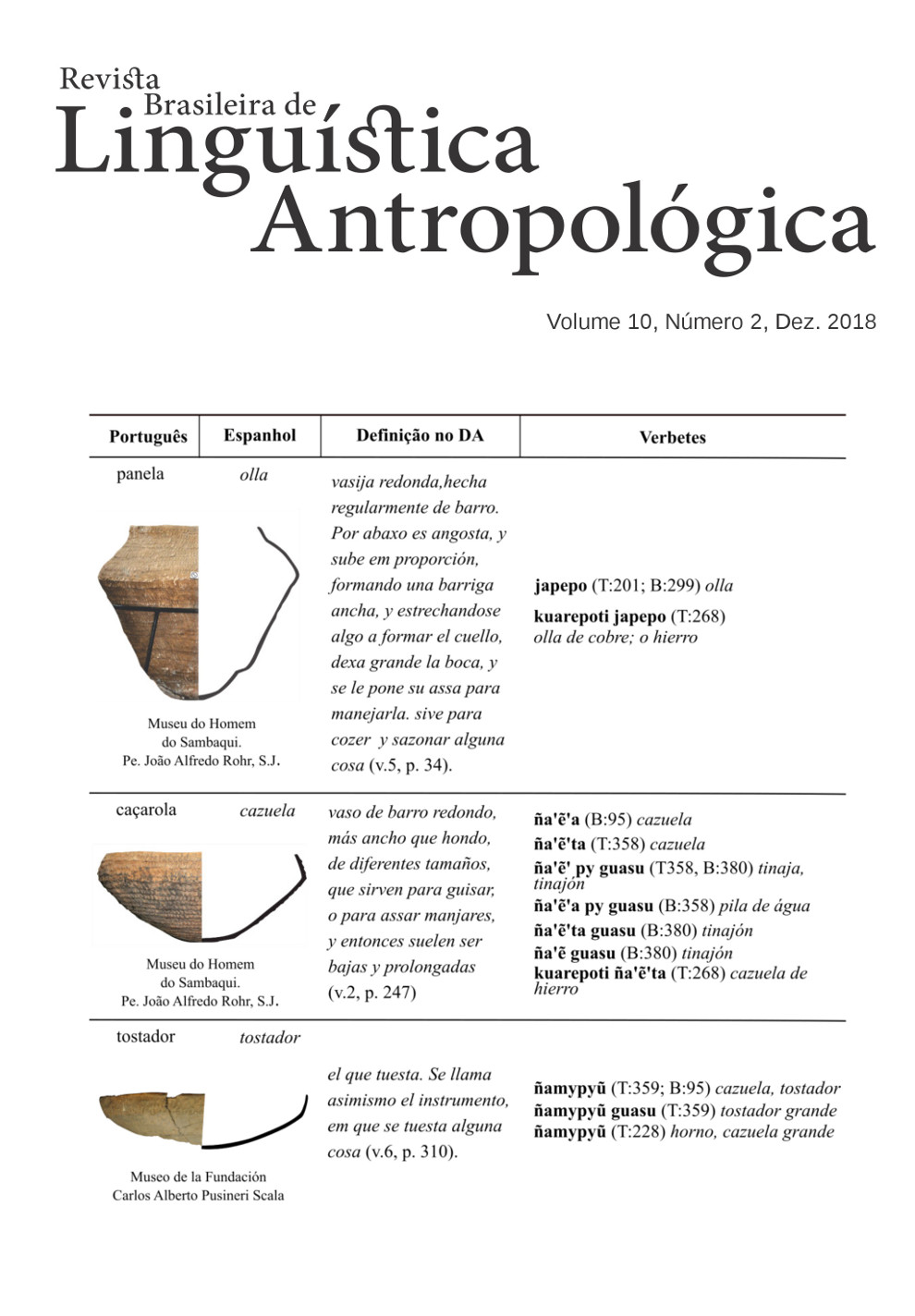Sociolinguistic aspects of the teaching and use of the Sabane language in the Sowaintê village, of the Indigenous Land Aripuanã-RO Park. Research report
DOI:
https://doi.org/10.26512/rbla.v10i2.20981Keywords:
Language Sabanê. Sociolinguistics. Revitalization. Indigenous School EducationAbstract
The present work brings together results of a sociolinguistic research that demonstrates the current situation of the use and teaching of the Sabanê language in the Sowaintê village. The data for were recorded during several field trips conducted in the years 2016 and 2017 and reveal that the Sabanê language is in serious danger of extinction, with few native speakers, and in the community focus of our investigation, there are only two speakers. In addition, the language is practically not taught in school, even with the efforts of some Sabanê teachers in promoting the teaching of their native language. The study was developed in the light of Dorian (1989) “Investigating obsolescence: studies in language contraction and death”, and in Thomason (2015) “Endangered languages. An introduction. “We have also considered the studies of Braga and Telles (2014), Telles (2002) and Araújo (2004) on the languages of the Nambikwára family. The results of the study show the advanced state of reduction of speakers of Sabanê and the urgency of the implementation of a linguistic policy that can give linguistic and pedagogical support to the revitalization of that language.
References
Araújo, G. A. de. 2004. A Grammar of Sabanê, a Nambikwaran Language. Utrecht: LOT.
Braga, A. G.; Telles, Stella. 2014. O comportamento do traço laringal em línguas Nambikwára do Norte: comparação entre o Latundê e o Negarotê. Universidade Federal do Rio de Janeiro: Linguística, vol. 10, n. 2.
Brasil. Ministério da Educação e do Desporto, Secretaria de Educação Fundamental. 1998. Referencial Curricular Nacional para as Escolas Indígenas. Brasília: MEC/SEF.
D’Ángelis, W.; Veiga, J. (Orgs.). 1997. Leitura e Escrita em escolas indígenas. Campinas/São Paulo: ALB/Mercado das Letras.
______. 2012. Aprisionando sonhos: a educação escolar indígena no Brasil. Campinas, SP: Curt Nimuendajú.
Dorian, Nancy C. 1989. Investigating Obsolescence: studies in language contraction and death. Cambridge: Cambridge University Press.
Gil, A. C.. 2008. Como elaborar projetos de pesquisa. São Paulo: Atlas.
Monserrat, R. M. F. 2006. Política e Planejamento Linguístico nas sociedades indígenas do Brasil hoje: o espaço e o futuro das línguas indígenas. In: Formação de professores indígenas: repensando trajetórias. Luís Donisete Benzi Grupioni (Org.). Brasília: Ministério da Educação, Secretaria de Educação Continuada, Alfabetização e Diversidade, p. 131-154.
Projeto Político Pedagógico Da Escola Indígena De Ensino Fundamental E Médio Sowaintê. 2014.Vilhena ”“ RO: SEDUC.
Price, P. D.. 1978. The Nambiquara linguistic family. In: Anthropological Linguistics, vol. 20, n. 1, p. 14-37.
Reesink, E.. 2015. Os Sabanê e os povos do Nambikwara do Norte: etno-histórias das ruínas da história e de recriações tardias. Campo Grande, MS: Tellus, ano 15, n. 29, p. 113-133, jul./dez.
Rodrigues, Aryon Dall’Igna. 2002. Línguas Brasileiras: para o conhecimento das línguas indígenas. 4. Ed. São Paulo: Loyola.
Sabanês, Ivonete. 2016. A atual situação do ensino e do uso da língua Sabanê na escola e na comunidade da aldeia Sowaintê: uma investigação sociolinguística para revitalização da língua tradicional indígena. [Trabalho de Conclusão de Curso]. Ji-Paraná, RO: Unir, p. 110.
Tarallo, F. 1985. A pesquisa sociolinguística. São Paulo: Ática.
Thomason, S. G. 2015. Endangered Languages. an Introduction. Cambridge Textbooks in Linguistcis. United Kingdom: Cambridge University Press.
Telles, Stella. 2002. Fonologia e Gramática Latundê/Lakondê. Tese (Doutorado em Letras). Amsterdam: Vrije Universiteit Amsterdam.
Downloads
Published
Issue
Section
License
Copyright (c) 2018 Revista Brasileira de Linguística Antropológica

This work is licensed under a Creative Commons Attribution 4.0 International License.
Authors who publish in RBLA agree to the following terms:
a) Authors maintain the copyright and grant the journal the right of first publication, and the work is simultaneously licensed under the Creative Commons Attribution License, which allows the sharing of the work with recognition of the authorship of the work and initial publication in this journal.
b) Authors are authorized to assume additional contracts separately, for non-exclusive distribution of the version of the work published in this journal (eg, publish in an institutional repository or as a book chapter), with recognition of authorship and initial publication in this journal.
c) Authors are allowed and encouraged to publish their work online (eg, in institutional repositories or on their personal page) at any point before or during the editorial process, as this can generate productive changes, as well as increase impact and citation of the published work.










